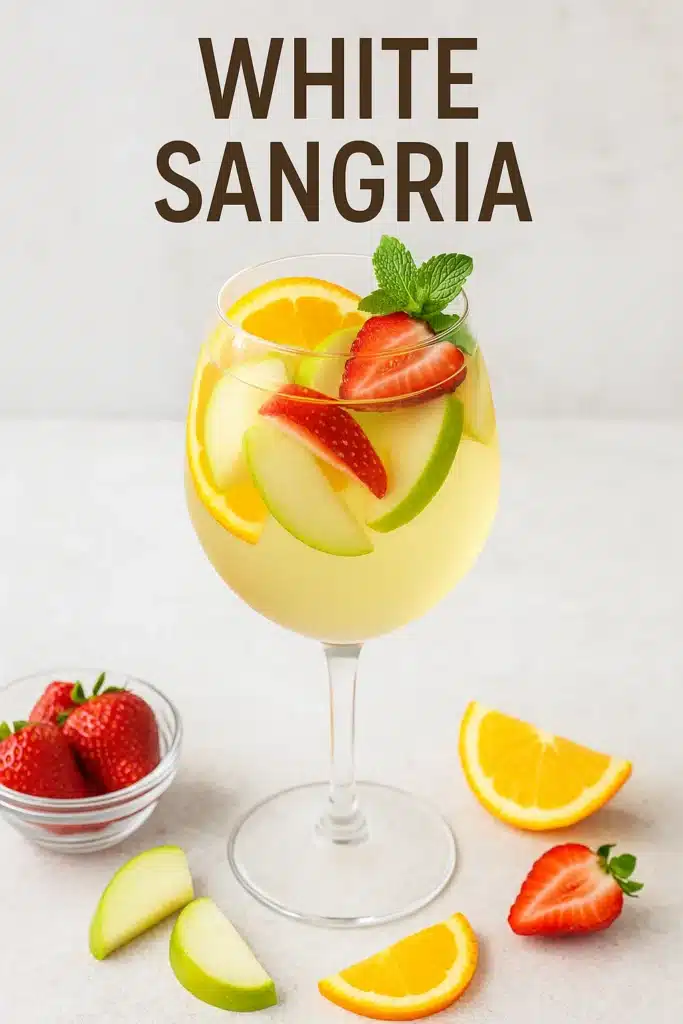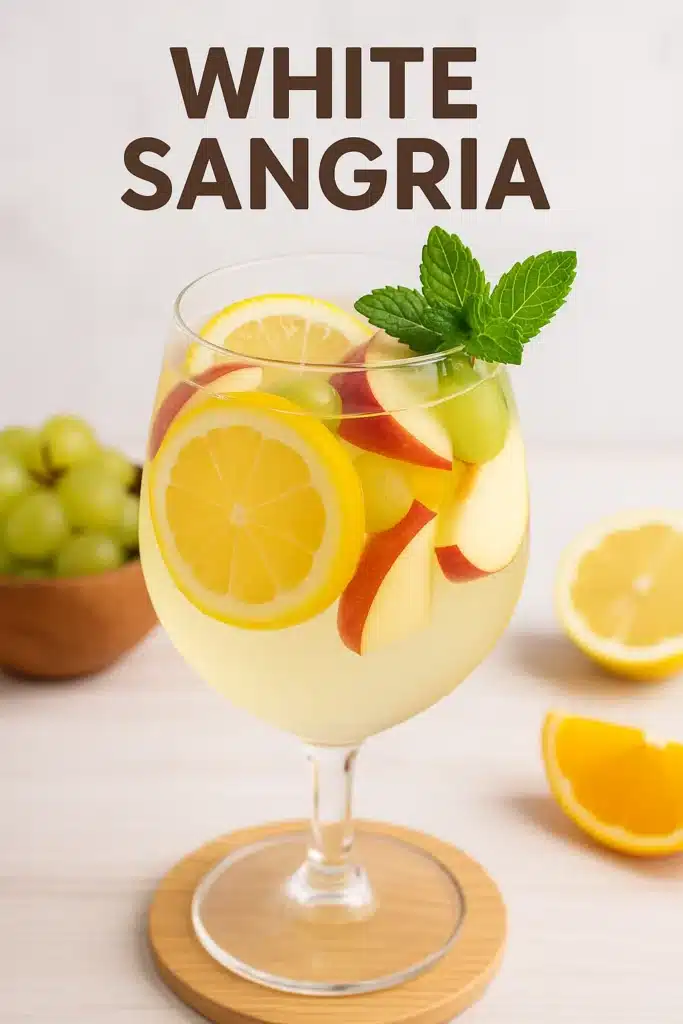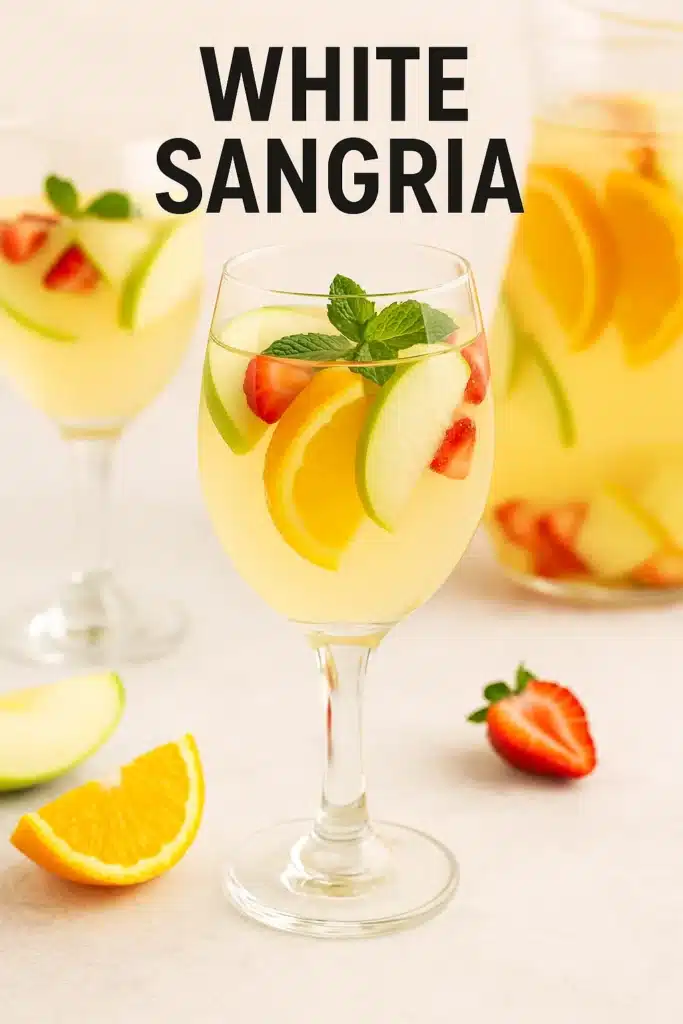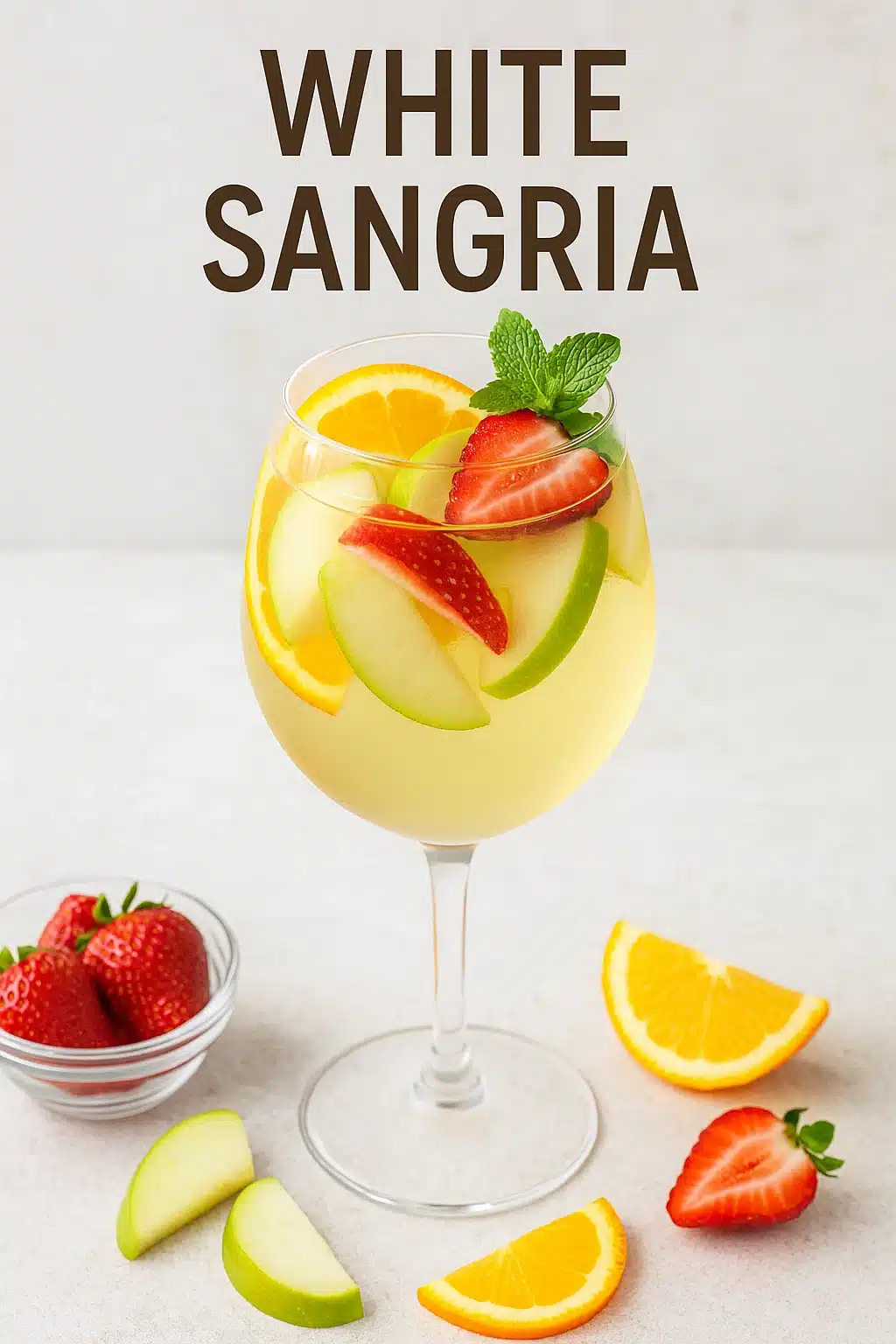White Sangria Recipe – A Personal Journey
When I think of summer gatherings, nothing sings louder than a chilled pitcher of White Sangria. It’s sunshine in liquid form: crisp white wine, citrus fruit bursting with juice, and just enough brandy to keep conversations lively. The very first time I made it, I didn’t follow a recipe. I wandered through a Sacramento farmers’ market, grabbed peaches and oranges still warm from the sun, and trusted instinct. The result? A drink that tasted like both California and Lima—the two halves of my culinary heart.
Table of Contents
Here’s my story in every recipe I share:
*”I’m Alex Morgan, an American food blogger who’s been cooking since childhood. While other kids marked summer with ice-cream cones, I followed my Grandma Rosa through Lima’s open-air markets, fingertips tingling from fresh yellow chile peppers as she said, ‘The fruit is talking to you.’
Ultimate White Sangria Recipe – 10 Minutes to Refreshing Summer Bliss
Equipment
- Large glass pitcher
- Wooden spoon
- Knife and cutting board
- Cocktail jigger
- Wine glasses or tumblers
Ingredients
- 1 bottle (750 ml) crisp white wine (Sauvignon Blanc or Pinot Grigio) unoaked, citrus-forward
- 0.5 cup brandy Spanish brandy if available
- 0.25 cup orange liqueur such as Cointreau or Triple Sec
- 2 tbsp honey or simple syrup adjust to sweetness of fruit
- 1 whole orange sliced thin
- 1 whole lemon sliced thin
- 1 whole apple cored and diced
- 1 cup peaches or nectarines sliced
- 1 cup green grapes halved
- 1 cup sparkling water or Prosecco added before serving
Instructions
- Add all sliced fruit to your pitcher.
- Pour in brandy, orange liqueur, and honey. Stir gently to coat the fruit.
- Add the white wine and stir again. Cover and refrigerate for 2–4 hours.
- Just before serving, top with sparkling water or Prosecco.
- Serve over ice, making sure each glass gets a mix of fruit.
Video
Notes
When we moved to California, my lunches smelled nothing like peanut-butter sandwiches. My first ‘science project’ was chicken marinated in sour orange juice—confusing the judges but tasting like home. Friends soon texted me blurry photos—’Help, my quinoa is a disaster!’—and I realized I’d rather translate flavors than algorithms. That spark created RecipesTrip, my messy, joyful notebook of fusion dishes: half Sacramento practicality, half Lima soul.”*
For me, White Sangria isn’t just a cocktail—it’s an invitation. Every slice of fruit you add tells its own story. Every pour of wine becomes a celebration. And every glass shared is a reminder that the simplest drinks can carry the most powerful memories.
Master the Art of White Sangria

White Sangria looks effortless, but a perfect pitcher is about balance. Too much brandy? The fruit gets lost. Too much sugar? The wine feels heavy. With a few simple choices, you can craft a sangria that’s crisp, refreshing, and worthy of any patio party.
Choosing the Right Wine
Skip the oak-heavy Chardonnay. You want light, fruity wines that play well with citrus. Pinot Grigio, Sauvignon Blanc, or an unoaked Spanish Albariño are excellent. They bring crisp acidity without overpowering the fruit. Think of the wine as your canvas—the brighter and fresher, the better the sangria.
Selecting the Fruit
Classic sangria calls for oranges, lemons, and apples. But here’s my tip: always add something unexpected. White peaches add softness. Pineapple brings tropical zing. Even green grapes, sliced in half, soak up the flavor and surprise guests. The key is variety in color and texture—each fruit should contribute something different.
Professional Bartender Techniques at Home
Bartenders know that chilling isn’t optional—it’s essential. Sangria tastes best when the flavors mingle for at least two hours in the fridge. Add sparkling water or Prosecco just before serving to keep the fizz alive.
Another pro trick? Layer your fruit. Put firm fruits like apples and grapes at the bottom of the pitcher, then softer fruits like peaches on top. This way, nothing gets mushy, and every glass poured looks vibrant.
Finally, balance the sweetness. If your fruit is super ripe, cut back on added sugar. If it’s tart, stir in a spoon of honey. Remember: the best sangria should never taste syrupy—it should taste like sunshine captured in a glass.
How to Make the Perfect White Sangria Recipe
The beauty of White Sangria is that it’s easy enough for a weeknight and impressive enough for a summer dinner party. With a few tools and fresh ingredients, you’ll be pouring glasses of sunshine in no time.
Equipment You Actually Need

You don’t need a full bar setup—just:
- A large pitcher (preferably glass, so the colors shine)
- A wooden spoon for stirring
- A sharp knife and cutting board
- Optional: A cocktail jigger for precise pours
Core White Sangria Recipe (Serves 6)
- 1 bottle (750 ml) crisp white wine (Sauvignon Blanc or Pinot Grigio)
- ½ cup brandy (Spanish brandy if available)
- ¼ cup orange liqueur (like Cointreau or Triple Sec)
- 2 tbsp honey or simple syrup (adjust to fruit sweetness)
- 1 orange, sliced thin
- 1 lemon, sliced thin
- 1 apple, cored and diced
- 1 cup sliced peaches or nectarines
- 1 cup green grapes, halved
- 1 cup sparkling water or Prosecco (added just before serving)
Instructions:
- Add all sliced fruit to your pitcher.
- Pour in brandy, orange liqueur, and honey. Stir gently to coat fruit.
- Add the white wine and stir again. Cover and refrigerate for 2–4 hours.
- Just before serving, top with sparkling water or Prosecco for a refreshing fizz.
- Serve over ice, making sure each glass gets a mix of fruit.
Creative Variations to Try
- Tropical White Sangria: Swap peaches for pineapple and mango.
- Sparkling Sangria: Use a bottle of dry cava instead of still wine.
- Low-Alcohol Sangria: Replace half the wine with sparkling grape juice.
- Winter White Sangria: Add pears, cinnamon sticks, and star anise for a cozy twist.
Pro Tips for White Sangria Success
White Sangria is forgiving, but a few smart moves separate “good” from “spectacular.” Here’s how to guarantee every pitcher impresses.
Common Mistakes to Avoid
- Using the wrong wine: Avoid oaky Chardonnays. They clash with fruit and weigh down the drink. Stick to crisp, citrus-driven bottles.
- Skipping the chill time: Don’t rush it. Two hours minimum in the fridge lets the fruit release juices and meld with the wine.
- Adding fizz too early: Sparkling water or Prosecco should always be added just before serving. Otherwise, you’ll lose that effervescent pop.
- Over-sweetening: Too much sugar makes sangria taste like syrup. Always taste-test before adding more honey or syrup.

Storage and Serving Suggestions
White Sangria tastes best the day it’s made, but you can store leftovers in the fridge for up to 48 hours. After that, the fruit can get mushy. If you know you’ll have leftovers, strain out the fruit and store the liquid separately—it’ll last longer and taste fresher.
For serving, use clear glasses or stemless wine glasses so the colors pop. Add a few fresh slices of citrus right before pouring for that “wow” factor. And don’t forget ice cubes: sangria should be icy cold when it hits the table.
Pro Bartender Touches
Want to elevate your White Sangria? Try freezing grapes to use as ice cubes—they chill the drink without watering it down. Or rim your glasses with a light dusting of sugar and lime zest for a festive look.
For pairing, I love serving this alongside something indulgent, like a bourbon caramel cheesecake recipe, because the sangria’s acidity cuts through the richness. And if you’re into layered cocktail techniques, the same stirring method I use here works beautifully in my espresso martini guide—keeping flavors balanced without bruising the ingredients.
For more recipes check our Facebook

